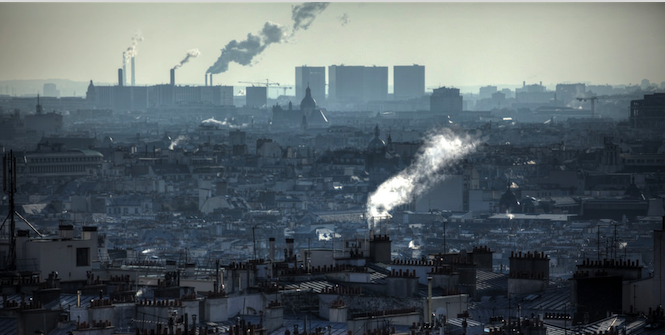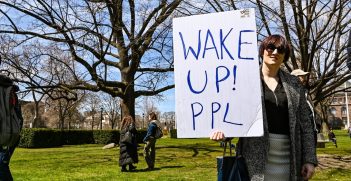Clearing the Hurdles on the Road from Paris

The recent signing of the Paris Agreement by a record 175 countries on 22 April is significant. While this is a groundbreaking accord, it remains to be seen how successful it will be at holding states accountable.
When the Paris Agreement was gavelled through on 12 December 2015, euphoria erupted. Yet this was less an expression of joy and more an eruption of sheer relief that an agreement was finally adopted after so many years of painstaking and unproductive negotiations. Everyone knows that the harder work lies ahead. On the road from Paris, the parties must clear a series of ongoing hurdles that must become steeper over time if the agreement is to be a success.
The first of these hurdles, the signature of the agreement, has been cleared. A record of 175 countries (out of 196 parties to the UN Framework Convention on Climate Change 1992) attended the high-level signing ceremony at the United Nations headquarters in New York on Earth Day on Friday 22 April. The rest are expected sign over the next 12 months while the agreement remains open for signature.
The importance of ratification
The earlier the ratification of the Paris Agreement, the sooner the parties can start concentrating on implementing their first round national mitigation pledges. The Paris Agreement will come into legal force when at least 55 parties covering at least 55 per cent of global greenhouse gas emissions have ratified the agreement.
This is exactly the same formula that applied to the Kyoto Protocol (although the latter covered only CO2 emissions, not all greenhouse gas emissions). The Kyoto Protocol was adopted in 1997 but it took a further eight years before it came into legal force in early 2005. The 55 per cent threshold of emissions was hard to achieve because the world’s two biggest emitters – the US and China – were not parties. It took a great deal of intensive EU lobbying to get Russia on board to reach the required threshold of emissions.
The good news is that both the US and China have already signalled their intention to ratify by the end of the year. These two parties cover approximately 38 per cent of total emissions.
The next biggest aggregate emitter is the EU at just under 10 per cent of the global share. However, EU ratification is likely to take more than a year due to the cumbersome internal process for ratification, which requires approval from 28 of the EU member parliaments plus the European Parliament. While most are willing, recalcitrant members like Poland could drag out the process.
However, India and Russia, which together share around 10 per cent of global emissions, have indicated in a joint communiqué with China that they are seeking timely ratification, which would provide a further boost to early entry into force. The early ratification by a large number of states with smaller shares of emissions could quickly make up the difference. Some of the smallest and most vulnerable island states, beginning with Fiji, are leading the push. This could see the Paris Agreement come into legal force within two years, and possibly even one.
Domestic politics
The success of the Paris Agreement depends on ongoing political commitment and civil society pressure at the national level. This is because the only legal obligation on the parties is to prepare, maintain and submit “nationally determined contributions” (NDCs); they are free to determine the content of their NDCs, including mitigation targets, and the policies and measures to achieve them. The agreement does not even impose any explicit legal obligation on states to achieve their domestic targets and no penalties are incurred if they are not met.
The only requirement is that parties must ensure that their NDCs are more ambitious in each successive five-yearly round of contributions. The periodic global stocktake of NDCs has also been carefully crafted to be facilitative and non-punitive by focusing on the collective effort required to achieve the parties’ collective goals and thereby “inform parties in updating and enhancing” their NDCs. It is, in effect, a national “show and tell” regime that depends on peer pressure from above and domestic pressure from below to succeed.
To meet the temperature targets of the Paris Agreement, which is to hold the rise of global average surface temperature below 1.5–2 degrees Celsius, the parties must dramatically increase the ambition of their domestic mitigation measures every five years. The faithful implementation of the first round of pledges would still see dangerous warming of around 2.7 degrees without further effort. So missing the mark in the first round will reduce confidence that subsequent rounds will be able to make up the difference in the diminishing window of time available for an effective response.
In light of the importance of the success of the first round of commitments, the most significant area of uncertainty in the near term is the US. The US rightly boasted a leadership role in brokering the Paris Agreement so the world is looking to the US to continue this to maintain political momentum under the agreement. These expectations are shared by China, which has long maintained that developed countries have a leadership responsibility by virtue of their larger historical emissions in accordance with the principles of the UNFCCC.
Although China has taken huge domestic strides in addressing mitigation and stood by the US in announcing its domestic measures in the joint announcement of November 2014, it continued to play a defensive diplomatic game in the Paris negotiations. Indeed, China and the G77 made sure that Paris Agreement reiterated that developed countries should continue taking the lead by undertaking economy-wide absolute emission reduction targets as well as continuing to lead in mobilising climate finance.
All eyes are therefore looking to the US as the biggest aggregate and historical emitter in the developed world. If the US is to meet its target of a 26–28 per cent reduction of emissions below 2005 levels by 2025, then the Obama Administration’s domestic mitigation strategy – most of which has side-stepped Congress and relied on the President’s executive powers – must be fully implemented. However, two clouds of uncertainly hang over this prospect.
The EPA’s Clean Power Plan
The first cloud is the legal challenge to the EPA’s Clean Power Plan, which is the centrepiece of the Obama Administration’s domestic mitigation strategy. The US Supreme Court has suspended the operation of the plan pending the outcome of the litigation before the US Court of Appeals for the D.C. Circuit, which is expected to make a decision later in the US fall (Australian spring). The decision is then expected to be re-examined by the US Supreme Court around a year later.
This has slowed mitigation momentum in the US but not stopped it. Despite a successful legal stay on the Power Plan pending a final legal ruling, around 20 states are pressing ahead by developing measures to ensure compliance. However, the death of Justice Antonin Scalia in February this year has reduced the Supreme Court bench to eight members, evenly divided between conservative and liberal justices. So the political complexion of the new appointee by the next president may well determine the fate of the Clean Power Plan.
Implications of a new US presidency
This brings us to the second uncertainty: who will win the US presidential election? A win by Hillary Clinton is expected to see the appointment of a liberal Supreme Court judge (Senate willing) and ongoing support for Obama’s Clean Power Plan, while a Ted Cruz victory is likely to see efforts to unravel all of Obama’s climate initiatives. A Trump presidency is much more of a wild card but he is likely to be a little less hostile to climate concerns than Cruz, which is not saying much.
Nonetheless, Republicans are becoming more enamoured of renewable energy. Coal production is in decline, with the largest US and world coal producer, Peabody Energy, recently filing for bankruptcy. In the wake of the hottest year on record in 2015, as well as the hottest March ever in 2016, denying climate change is going to become very hard work. Recent polling shows that the number of US voters who are more likely to vote for a presidential candidate with strong climate policies now exceeds those who would not vote for such a candidate by a factor of three to one.
Of course, the Paris Agreement will outlive the next President. As any hurdle runner knows, you can still finish the race and make up lost time even if you fail to clear a few hurdles along the way.
Robyn Eckersley is a Professor of Political Science in the School of Social and Political Sciences at the University of Melbourne. This article is published under a Creative Commons Licence and may be republished with attribution.





